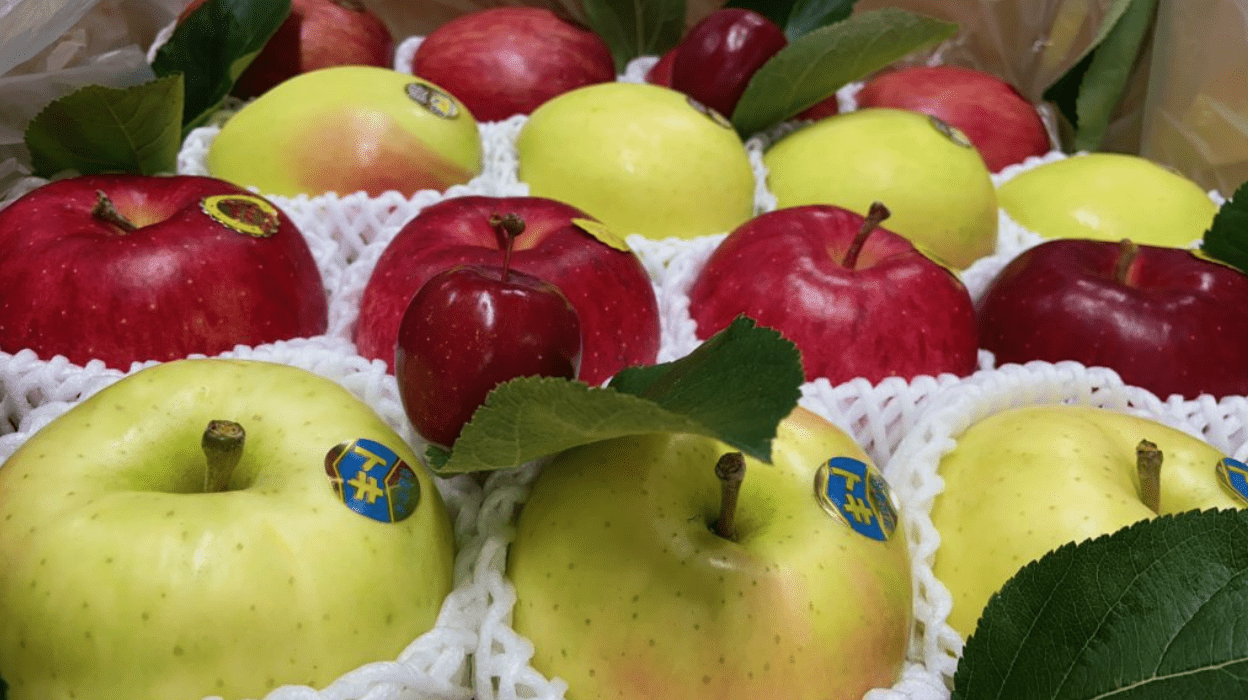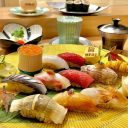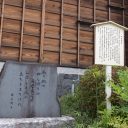Aomori Prefecture is renowned both throughout Japan and parts of the world for its apples. You are probably aware of the “Fuji” apple. The Fuji apple is just one of Aomori’s many delicious apple varieties. Aomori takes its apples seriously. So naturally, when it comes to apples Aomori Prefecture’s Kuroishi City isn’t fooling around either.
Apples are everywhere in Kuroishi City. As soon as you get out of the city centre, there are apple trees everywhere you look. The rich, deep reds and energetic greens make for beautiful autumn scenery. Paired with Aomori’s mountains, especially the tremendous Mt. Iwaki, you have an authentic Japanese countryside experience.
Truth be told, Aomori’s apples are probably a little different to the ones you get down the road at the local shop. Of course, apples are apples, no matter how you put it (no comparisons with oranges to be made here!) There is a large difference though. Can you see it? It’s hard to miss. That’s right, the apples here are ginormous! Just check out this whopper.
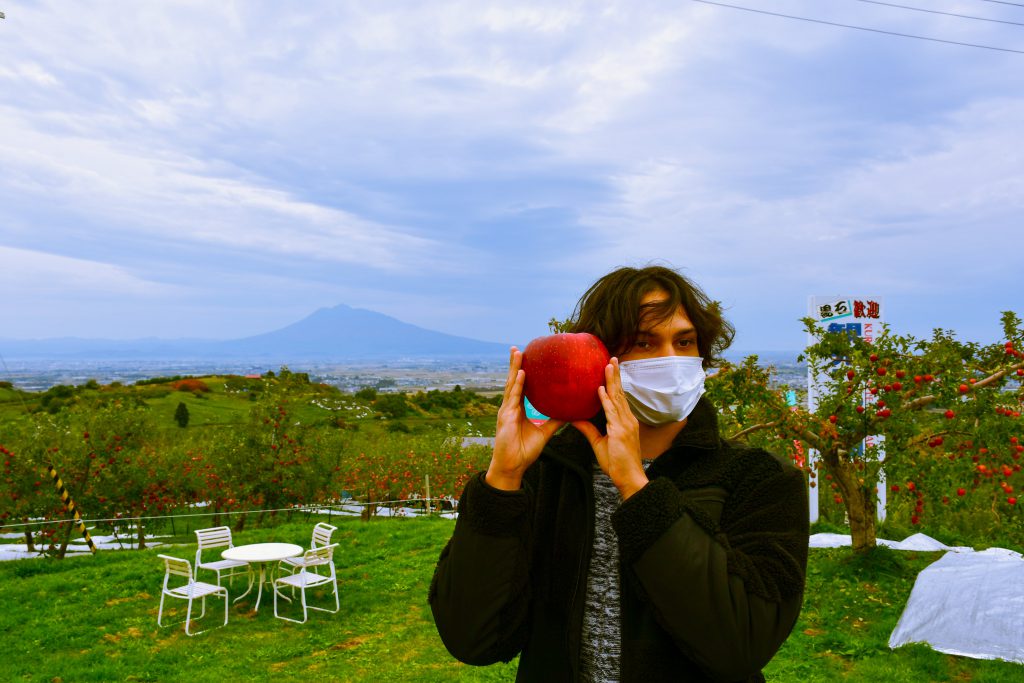
This thing is pretty close to the size of my head! So I may not have the biggest noggin, but nonetheless, this is quite a spectacular apple. This isn’t some freak of nature apple, either. The apples produced here are usually quite large in comparison to the apples typically found in Australia. Now to be fair, this one, part of a variety known for its size, is called “Sekai ichi” (which means world’s number one). Seems like a rather befitting name, don’t you reckon? The average apple here is a bit smaller than this, but still pretty big.
Being in Japan’s apple capital, I’ve eaten my fair share of apples during my time here. And I must say that the apples here won’t fall short of your expectations. I’ve never had a bad apple here. The apples are always crisp, juicy and sweet. There’s the deliciously sweet Fuji, Jonagold, the sweet apple with a pleasant tartness, the sweet and tangy Jonathan and countless other varieties, allowing hungry people enjoy apples depending on the flavour they’re craving. Even if you can’t make your way out to the orchards themselves, plenty of Aomori’s delicious apples are available at local supermarkets throughout Japan. You’ve gotta be quick though, as they’re naturally a popular choice.
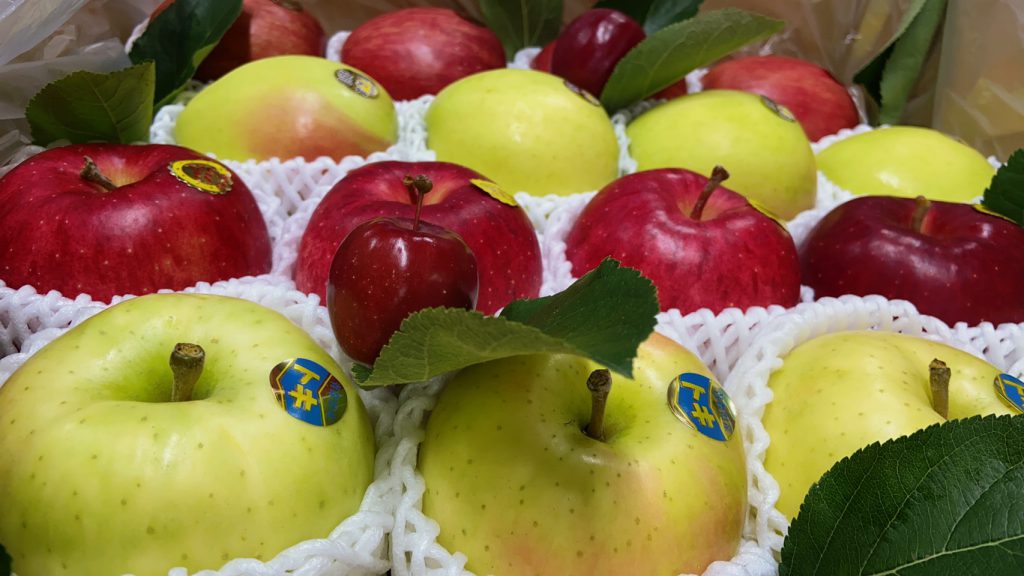
At Kuroishi’s Tourist Apple Orchards, you can pick and eat as many apples as you can, and take a few home too!

No matter how delicious the apples are, make sure your eyes aren’t bigger than your stomach. Just a few apples will fill you up faster than you’d think. The size does change the eating experience however. As I’m sure many of you do too, I’m used to eating my apples by holding them and biting into them. Apples are eaten a little differently in Japan. By being much larger than the kind of Apple you’d get in Australia, it’s a little trickier to bite right into them. Throughout Japan it’s normal to slice your apple up before eating it. Slicing into the apple also has another purpose: checking out the inside.
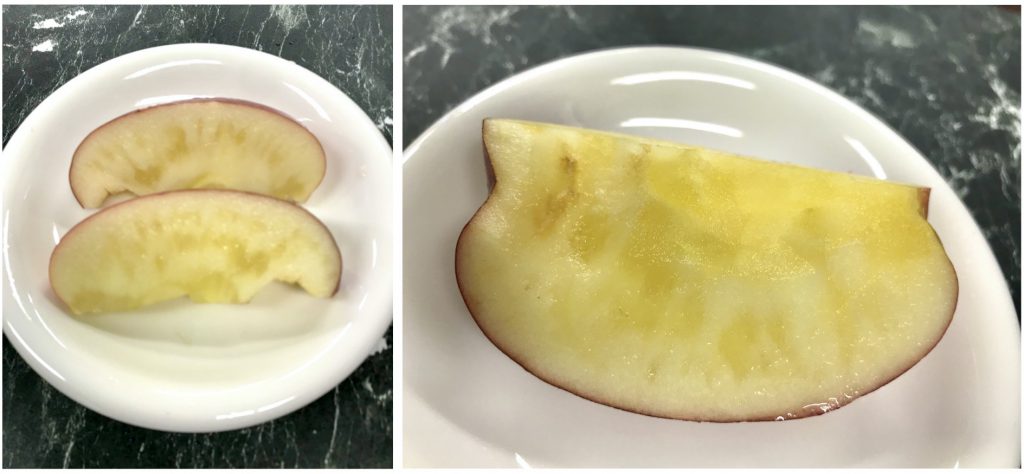
As you can see in the picture, there are plenty of dark, honey-like spots towards the centre of the apple. You may be familiar to these spots, at least to some degree. In English the term for this is called “watercore”. In many countries it’s considered a disorder and these apples are typically discarded of. In Japan, this occurrence in the apple is known as “mitsu”. Mitsu, meaning honey or nectar is one thing that is desired in Japanese apples. Apples filled with mitsu are considered to be tastier and sweeter than regular apples. As the old saying goes, beauty is in the eye of the beholder.
The apples have plenty of culinary uses too. You have your standard sweet goodies like apple pies and apple juices, but that’s not all. Apples are also used extensively in savoury dishes like curries and plenty of restaurant unique foods. One of my personal favourites is an apple tartar sauce that a local restaurant serves with some of their fried dishes. It may sound a little strange, but it’s unfathomably delicious.
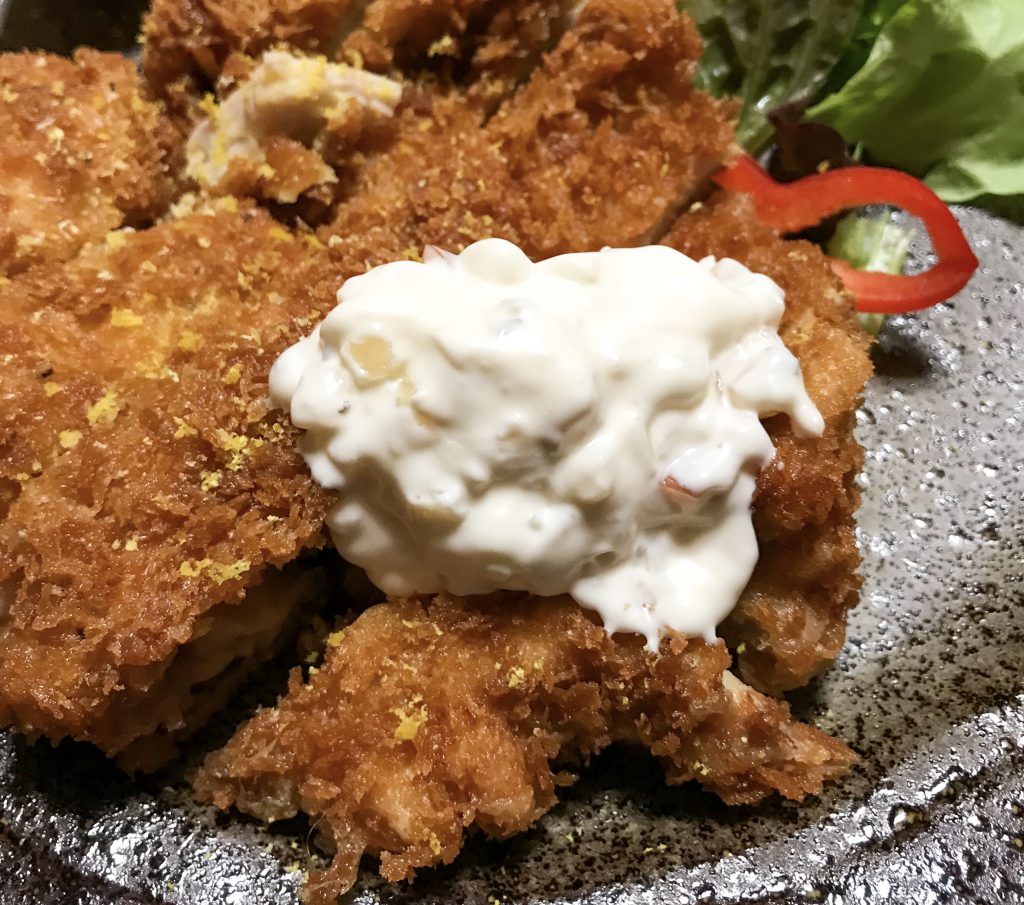
Apples really are the pride of much of Aomori, and it’s not hard to understand why. When they’re as part of your everyday life as much as they are here, it’s hard to not be even a little passionate about them. Stop by on your next trip. Who knows? Maybe you’ll start to go apple crazy yourself.

* This article was written in October 2020. Masks were worn as a general precaution to COVID-19. Kuroishi’s apples are not dangerous, so social distancing and masks are not required around them.*
— Article From BACK LANE
